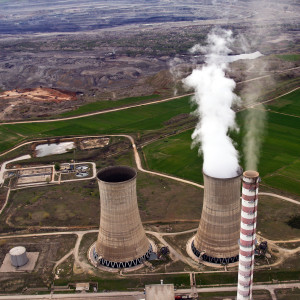Much has been written about the state of climate change communications within the United States, and many distinguished academics have conducted research that has provided insight and moved the field forward in a substantive manner. My purpose is not to duplicate the formal research, but simply to pass along my observations from having found myself, by accident, on the front lines of climate change communications for the past five years.
Here are twelve tips and techniques I’ve found useful in communicating what is arguably an abstract and diffuse challenge, but also one of the most important issues of our time.
- Climate change is a really important issue. But it’s not the only important issue. Our changing climate will impact and is simultaneously affected by the world’s human population, our requirement for food, energy and water resources, our globalized and high technology world and our collective belief that we are in a sustained period of very tight financial resources.
- Why should we care about climate change? We care because now when the climate changes it affects the Earth’s people, not just polar bears. The changes in water are fundamental and will be felt by everyone. And while it is true that climate has changed substantially many times in the past, for virtually all of human civilization we have been blessed with a very stable climate. We are inadvertently getting rid of the stability and trading it in for a climate that modern humans have never experienced.
- The messenger counts. Having a person who is affiliated or seen as sympathetic to the group or ‘tribe’ she or he is talking to is very useful. Finding credible messengers to reach out to the center and center-right populations and influencers is very important.
- If you have time to convey your message over weeks, months and years, use that time wisely. Start with the facts of pictures and images of how our climate is changing today without discussing computer models or climate projections. Lead a discussion about how to adapt to these changing conditions. Make it local to your audience without going beyond the science. Let the organization draw the conclusions from the information. Ask what happens if the climate continues to change. How might we know what those changes will look like? How much more will further adaptation cost? What is the root cause of the problem? Patience and persistence are your friends.
- Acknowledge the benefits fossil fuels have brought to our societies. The issue is not how to live without energy, but how to transform our energy sources to ones that minimize damage to the stability of our climate system.
- Have your way to describe the difference between weather and climate. Some people use dice at a craps table, I talk about the individual hand in a poker game (weather) vs. the card deck from which it was dealt (climate). We plan for a future climate, but we live in today’s weather.
- Know your stuff. You will encounter some who genuinely do not understand how a colorless, tasteless, odorless gas that seemingly doesn’t exist can have such an impact on the earth, and others who take a more activist stance at conflating and confusing the physics. You don’t have to be Jim Hansen, Ben Santer or Mike Trenberth – but you should be comfortable with the basic processes. www.skepticalscience.com is a good place to start.
- Emphasize what we know. While we don’t know everything, we know a lot, and we have known a lot about the basic physics of greenhouse gases for over a century. I show the verification of some of the early 1980’s climate projections – science has been solid on the basics of climate change for decades.
- We also know how to deal with the science that we don’t yet know. Most successful organizations use a risk management strategy to account for a future that no one knows with perfection. Waiting for certainty is usually a poor option. And hoping that ‘everything will work out’ is rarely a good strategy.
- Know your answer when you are asked, “what should we do?” There are individual actions we can all take (think about how we use energy and water when we buy our next car, renovate our home or whenever we are at the market buying food). “Earth: the Operator’s Manual” is a good reference. But the ‘heavy lift’ will be to change our world’s energy system, and that will require active voter interest and advocacy, supporting political leaders who will need to make some tough choices. It can be done – but it will not be simple, quick or linear.
- Walk the line between giving the audience hope, while instilling the gravity of the challenge ahead. Too easy, it will never become a priority. Too hard, then why try.
- The message is serious, but don’t take yourself too seriously. A little humor, at the right time and place, can go a long ways.
Too simplistic, too optimistic? Perhaps, but messages that polarize or convey nothing but doom have not been effective. Leadership counts in solving climate change, as it matters for virtually any challenge worth discussing. Our challenge is to convince the American public to demand leadership on this issue. Not for the polar bears, but for themselves, their neighbors and their children.

